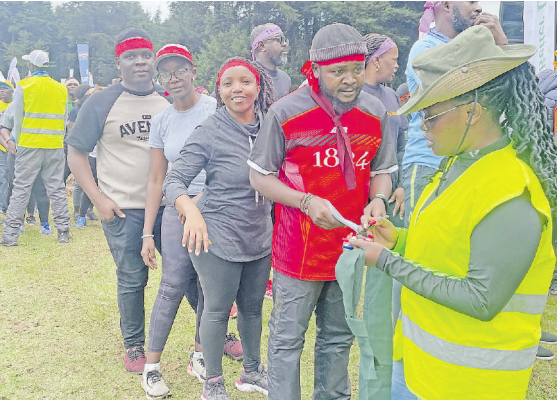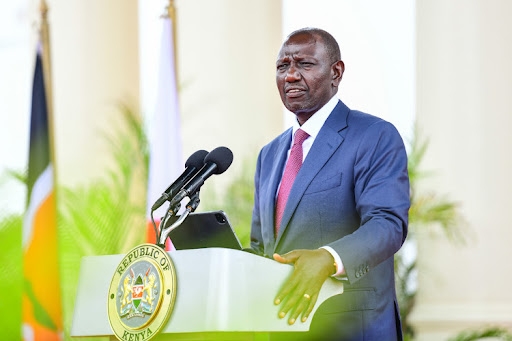
 Radio Africa Group takes part in the past Forest Challenge at Kereita in Kiambu County/File
Radio Africa Group takes part in the past Forest Challenge at Kereita in Kiambu County/File An annual conservation event seeking to restore the heavily
degraded water towers is set to take place on Saturday at Kereita Forest in
Kiambu County.
The East African Wildlife Society said the proceeds from
the 10th edition of the Forest Challenge, which combines fun and competitive
forest-based activities while raising awareness about the importance of forest
protection and restoration, will restore the heavily degraded water towers.
“Kenya’s water catchment areas are under significant threat
from deforestation and human activities. The Forest Challenge 2025 brings
together stakeholders from various sectors to address these critical issues
while fostering a culture of conservation,” EAWS executive director Nancy
Ogonje said.
The challenge has, over the years, been held in partnership
with the Kenya Forest Service (KFS) and Kijabe Environment Volunteers (KENVO).
This year’s theme, “Greening Kenya: One Tree at a Time,”
underscores the collective commitment to environmental stewardship, climate
resilience and the restoration of Kenya’s vital ecosystems.
Ongonje said the challenge aims to plant and nurture a
minimum of 60,000 indigenous trees annually and also promote community engagement
in forest conservation while improving livelihoods through job creation and
income-generating activities.
She said 105,873 trees have been grown in the Mau and
Aberdare water towers, thanks to the proceeds from the past events.
Other notable strides made include the rehabilitation of 105
hectares (259 acres) and the absorption of approximately 2,541 tonnes of carbon
dioxide from the atmosphere.
Approximately Sh5.3 million has been paid directly to the
community for the procurement of seeds and labour.
Over 500 households have improved their livelihoods.
Ongonje said the challenge is also aimed at raising public awareness about the vital role of forests to foster interest and cultivate a sense of responsibility for their conservation.
The challenge also seeks to establish long-term partnerships
to support sustainable forest conservation and management.
The Forest Challenge aims to mobilise resources for the restoration of at least 600 hectares of degraded forest landscapes by 2030.
This entails planting a minimum of 600,000 trees over 10
years.
Funds raised will support the planting and maintenance of
these trees over a three-year period to ensure their successful growth, Ongonje
said.
The 2021 National Forest Resource Assessment placed Kenya’s
forest cover at 8.83 per cent, which falls below the global 10 per cent
minimum, while national tree cover stood at 12.13 per cent.
Kenya’s forests continue to face pressure from agricultural
encroachment, illegal logging and fuelwood collection.
Between 2002 and 2022, Kenya lost approximately 50,700
hectares of forest, accounting for 14 per cent of the country’s total tree
cover loss.
In 2023 alone, Kenya lost around 7,240 hectares of natural
forest, leading to emissions of approximately 9.22 million metric tonnes of
CO₂, according to Global Forest Watch, 2023.
Given the escalating impacts of climate change and
biodiversity loss, forest restoration is an urgent priority.
Kenya has committed to large-scale reforestation, with a goal of planting 15 billion trees on 10.6 million hectares by 2032 to achieve 30 per cent tree cover.


















